Hello, everyone. My name is Daichi, an expert providing the information on the radiation issues in an easy-to-understand manner.
Today as continuous works from the previous articles, regarding the stochastic effects, I would like to respond to the following questions:
– What is the mechanism to cause the stochastic effects?
– What are the characteristics of the stochastic effects?
– What is relationship between exposure to radiation and risk for cancer?
Table of contents of this article
- Impact on human health caused by exposure to radiation (Vol. 3)
- Mechanism to cause the stochastic effects
- Characteristics of the stochastic effects
- Relationship between exposure to radiation and risk for cancer
- Summary
I have been involved with the radiation-relevant issues, like the policy on the decontamination activities, after the accident of the Fukushima Daiichi Nuclear Power Plant in 2011.
I received a doctorate in the field of radiation, while working in Fukushima.
Impact on human health caused by exposure to radiation (Vol. 3)
In the preceding articles (Impact on human health caused by exposure to radiation (Vol. 1)) and (Impact on human health caused by exposure to radiation (Vol. 2)), with regard to the impact on health caused by exposure to radiation, general outline of the deterministic effects and the stochastic effects, and by especially focusing on the deterministic effects, sensitivity to radiation of each organ and tissue and difference of threshold values (dose) have been elaborated.
In this article, as a next step, regarding the stochastic effects, after explanation of its mechanism, its characteristics especially focusing on the difference with the deterministic effects, as well as relationship between exposure to radiation and risk for cancer (development of cancer and mortality risk from cancer) are covered.
Mechanism to cause the stochastic effects
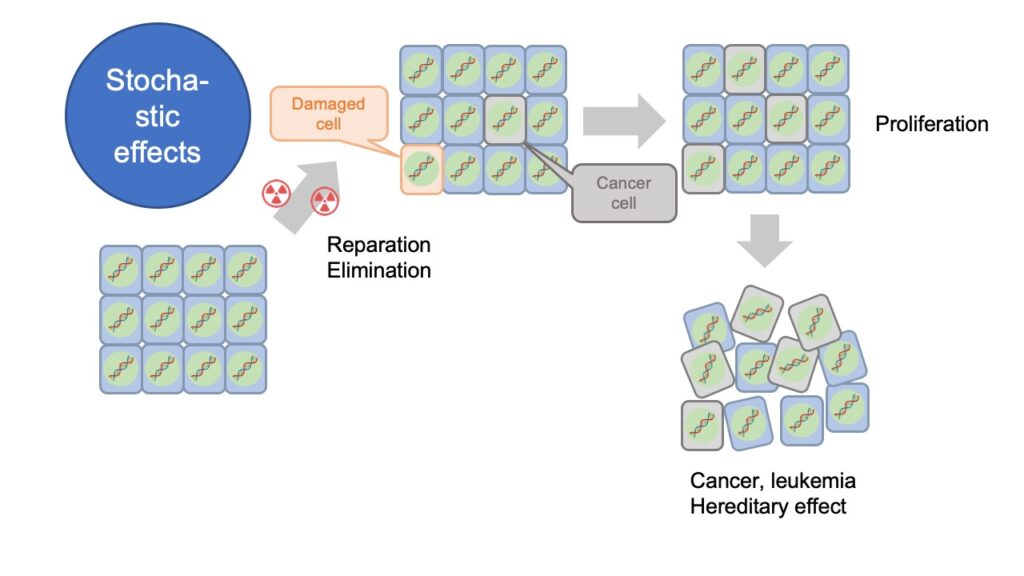
Mechanism to cause cancer is represented in the following figure.
Exposure to radiation to normal cells sometimes causes damages on DNA with genetic information, but these damages are usually repaired by system inherent in human body, or sometimes damaged cells themselves are eliminated by the system, in order to maintain the function of human body, as covered in this article.
However, if dose with radiation on people increases, the negative impact on human health sometimes appears as the deterministic effects, as covered in this article, but some of the damaged cells are repaired incompletely or incorrectly, and they could become cancer cells as a result of mutation.
If the cancer cells proliferate, the negative effects could appear as cancer or hereditary effects, and the effects are called ‘the stochastic effects’.
Characteristics of the stochastic effects
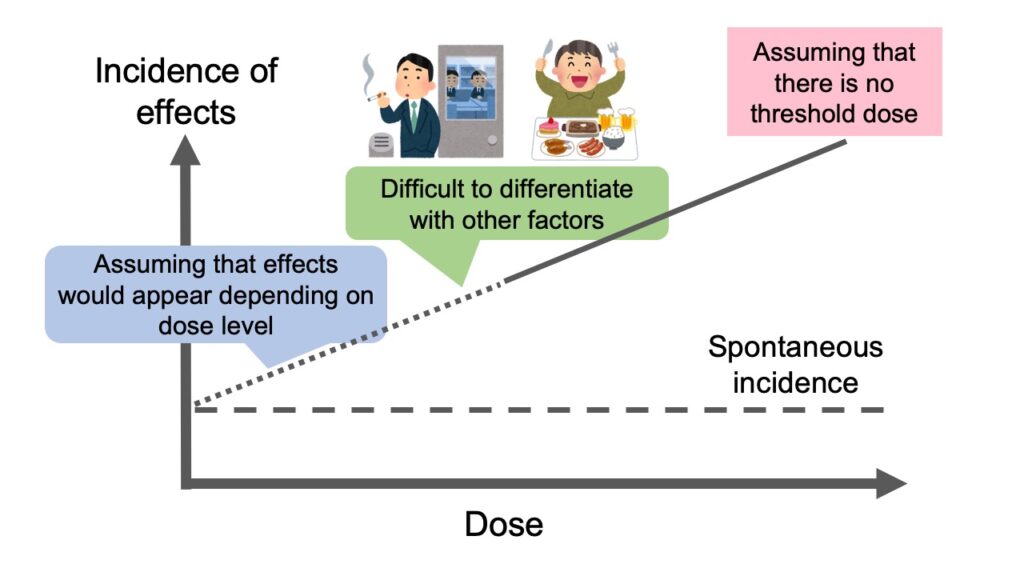
For the next, characteristics of the stochastic effects, especially compared with the deterministic effects, are represented in the following figure.
One of the characteristics of the stochastic effects is that, it is assumed that there is no threshold value, which the deterministic effects have.
By the way, when it comes to the deterministic effects, people are suffered from cancer, leukemia and hereditary effects, even if they are not additionally exposed to radiation.
And the incidence/proportion of the disorders is sometimes called the spontaneous incidence.
It is difficult to clearly distinguish the impacts caused by radiation with dose less than around 100-200 mSv, with other factors to cause cancer, like smoking or daily diet.
ICRP recommends to set up criteria or system for radiation protection, under the assumption that there is a linear, proportional relationship between dose and incidence of negative effects, even in the range of low dose.
For setting up the criteria or system, results of the epidemiological studies for groups of atomic bomb survivors of Hiroshima and Nagasaki have been used.
Relationship between exposure to radiation and risk for cancer
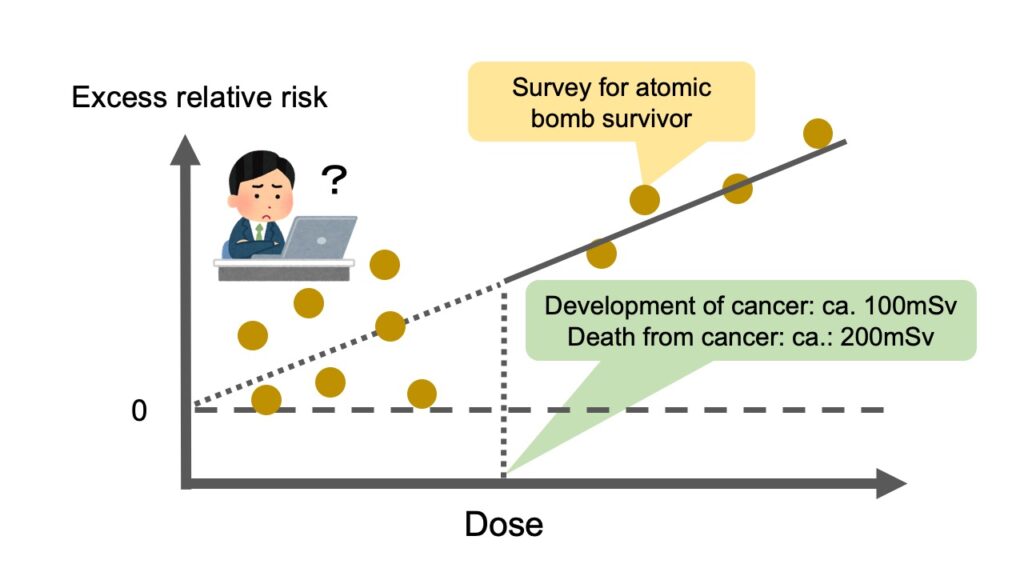
Mainly as a result of the epidemiological surveys for atomic bomb survivors in Hiroshima and Nagasaki, it has become apparent that with exposure to radiation with relatively high dose, risk for development of cancer, as well as risk for death from cancer would increase.
It is confirmed, that there is a linear correlation between dose and excess relative risk, specifically more than 100mSv for development of cancer, and 200mSv for risk for death from cancer.
However, regarding the dose less than the doses (100mSv or 200mSv), discussion still continues and as aforementioned, at this moment, radiation protection system has been set up, under the assumption that there is a linear relationship between dose and risk for cancer.
Currently the most dominant factor for death of Japanese people is cancer, and around 30% of people die from cancer, even if there is no additional exposure to radiation.
ICRP recommends to set up radiation protection system, under the assumption that probability for death risk from cancer would increase by 0.5% with exposure to radiation with dose of 100mSv.
If linear relationship is assumed between dose and risk for death from cancer, the risk could increase by 1% with dose of 200mSv, 1.5% with dose of 300mSv.
If this interpretation is represented with specific number of people, it will be like the following figure.
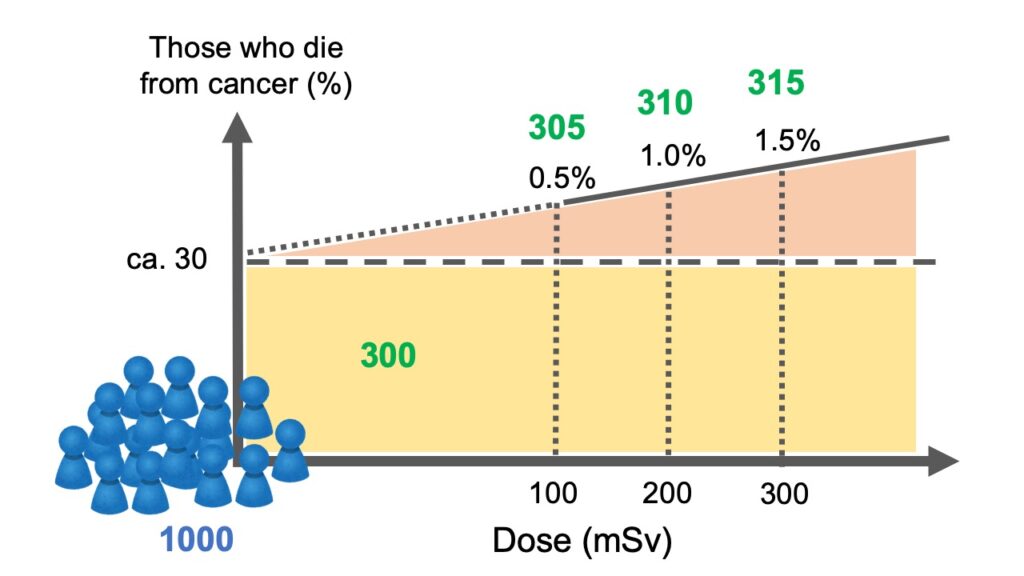
Provided that there is a group of 1000 Japanese people:
– Around 300 people die from cancer, even if there is no additional exposure to radiation.
– If all 1000 people are exposed to radiation with dose of 100mSv, theoretically the number of people who die from cancer will be 305.
– With dose of 200mSv and 300mSv, 310 and 315 people would die from cancer, respectively.
To understand better the value: ‘0.5% per 100mSv’, magnitude of 1mSv or 100mSv would be elaborated in the coming article.
Summary
Regarding the stochastic effects, this article covers the mechanism to cause the effects, characteristics especially focusing on the difference with the deterministic effects, as well as relationship between dose and cancer (development of cancer and death from cancer).
By the way, above-mentioned contents are summarized in the following videos.
It would be appreciated to visit them at your convenience.
– Japanese version
– English version
You can read the same article in Japanese here.
Thank you very much for reading this article.
See you next time!
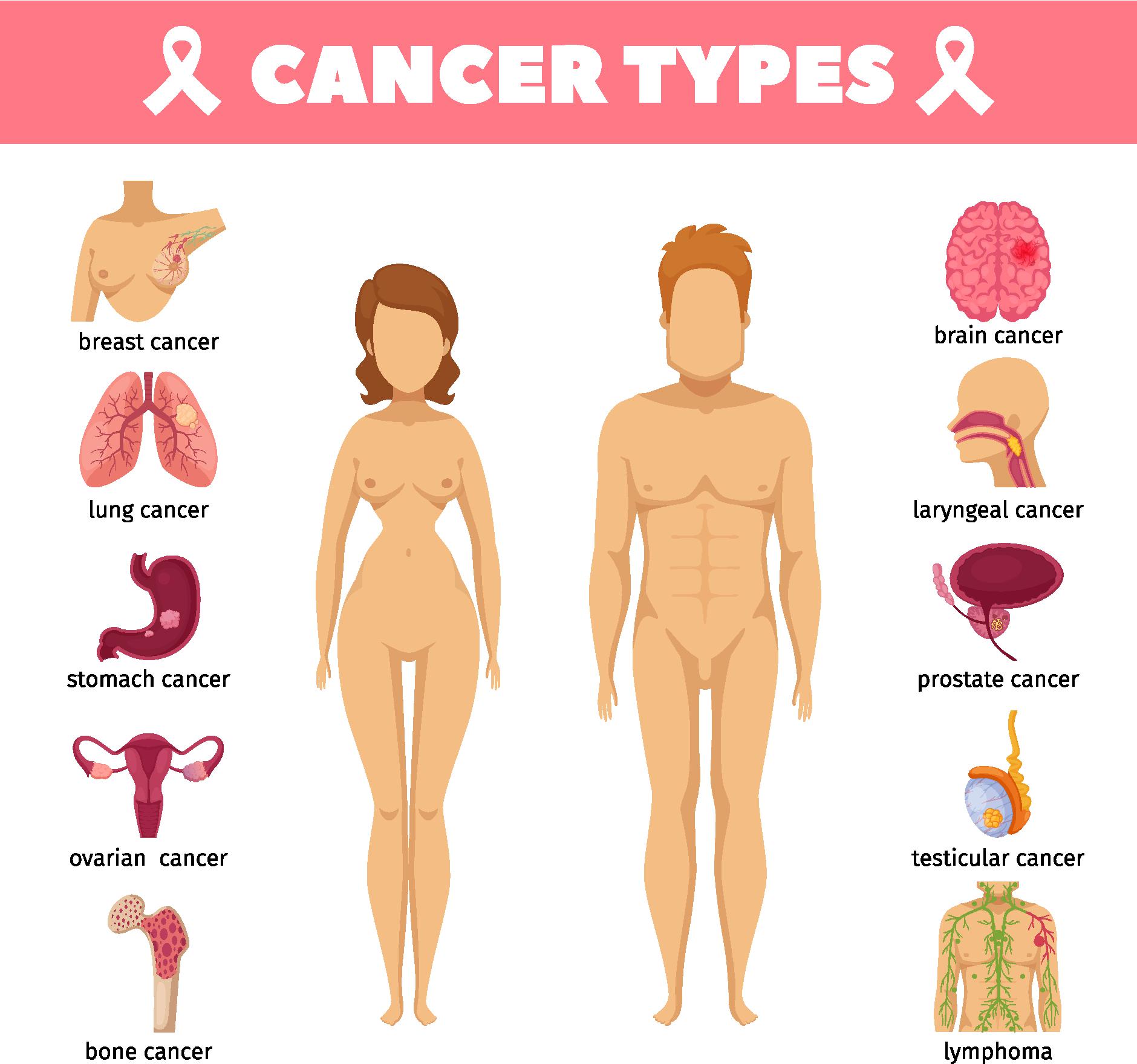


コメント